Basil Pistachio Pesto
This Basil Pistachio Pesto is an ode to fresh summer flavors. Made in less than 30 minutes using basil leaves, toasted pistachios, fresh garlic, Parmesan, and extra-virgin olive oil, you can use your pesto in a pistachio pesto pasta, as a pizza base, or for an amazing punch to eggs, soups, or sandwiches.
Read on to learn all the tips and tricks for making pesto. Or just grab your food processor, hit that Jump to Recipe button and let’s make pesto just like your nonna would have made if she had a food processor!
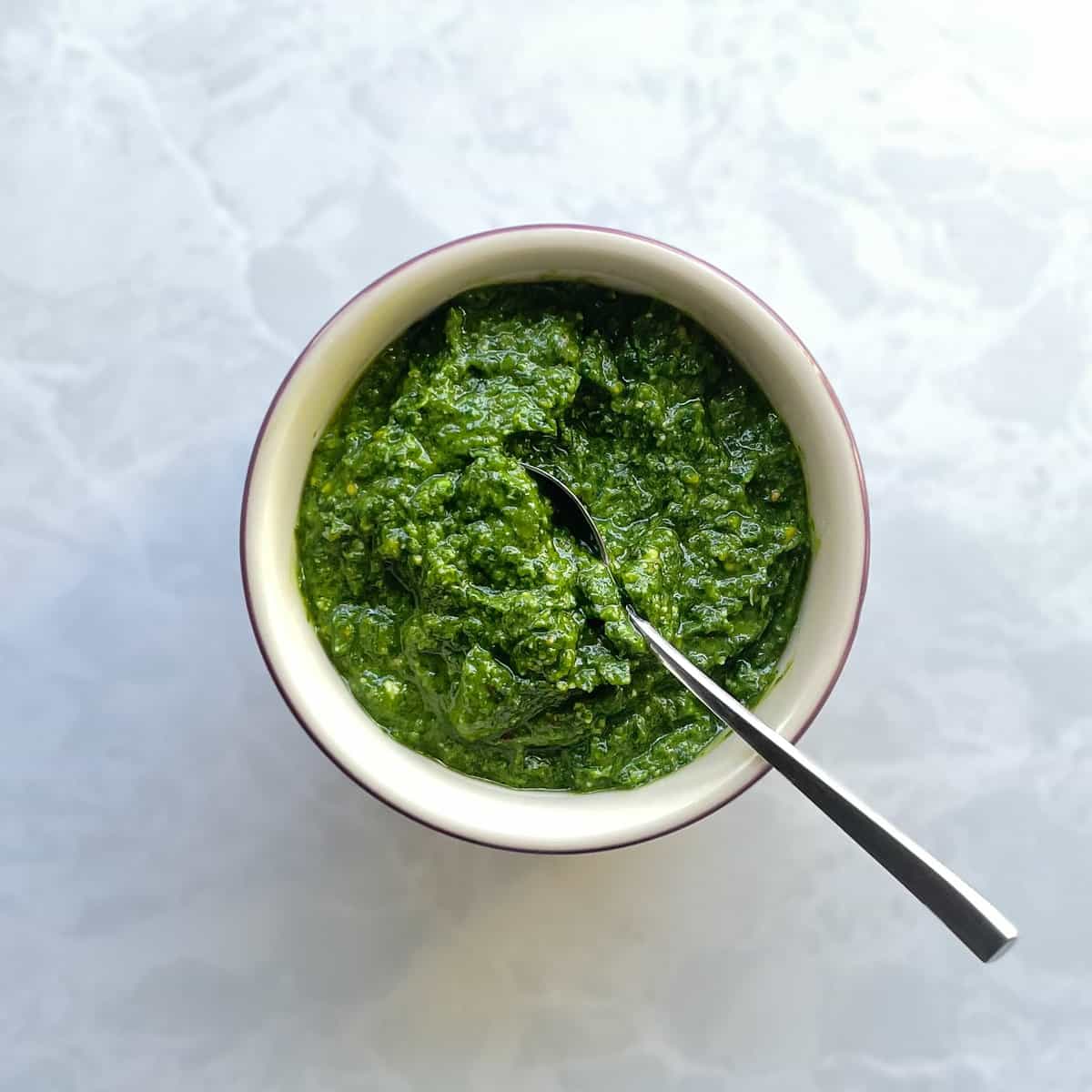
Ingredients
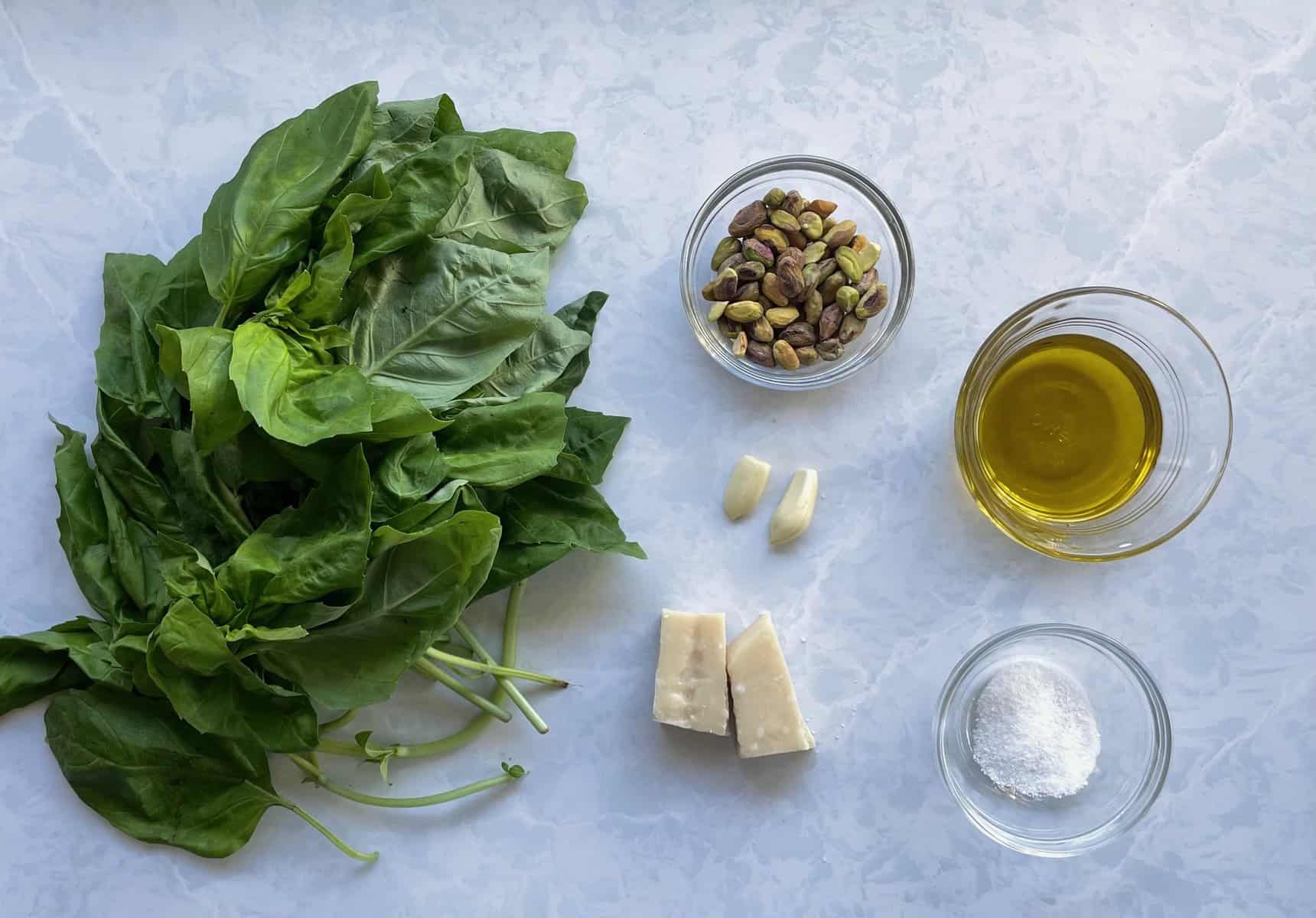
Basil is an annual plant with many varietals grown around the world. Genovese basil is the basil typically used for pesto alla Genovese, but you can use purple basil or other basil varietals for this pistachio pesto to play around with flavor.
While pine nuts are traditional in pesto alla Genovese recipes, they’re becoming more scarce and expensive because of destruction of pine forests. This basil pistachio pesto recipe uses pistachio because they’re listed only as “near-threatened” by the International Union for Conservation of Nature and Natural Resources
Please take the time to toast your nuts. Toasting, whether in pesto or in baking (like in this coffee and walnut cake) really brings out their flavor.
And always taste nuts to make sure they aren’t rancid. If you use lots of pistachios in your cooking and go through them quickly, you can store them in a cool, dry place. Otherwise, you’ll want to freeze your pistachios for longer shelf life.
Please see the recipe card below for complete information on ingredients and quantities.
Variations and substitutions
- Add a tablespoon or two of pecorino romano in addition to the Parmesan.
- Use a different basil other than Genovese basil or a combination of basil varietals.
- Out of season, make a winter pesto like arugula spinach pesto.
- Though not traditional, you can add a bit of lemon zest or juice to brighten up the flavor. Or make it richer and add a few tablespoons of butter like Marcella Hazan.
Recipe tips and tricks
To make pesto, tear off the basil leaves where the thick stalk joins the leaf. You’ll want even the tiniest leaves, but throw away or compost the stems and any flowers or black or brown bits.
Pesto alla Genovese originates from the Italian port city of Genoa (also Genova). Pesto comes from the Italian word “pestare,” meaning “to pound” or “to grind.” While pesto is traditionally made with a mortar and pestle, using a food processor saves time and effort.
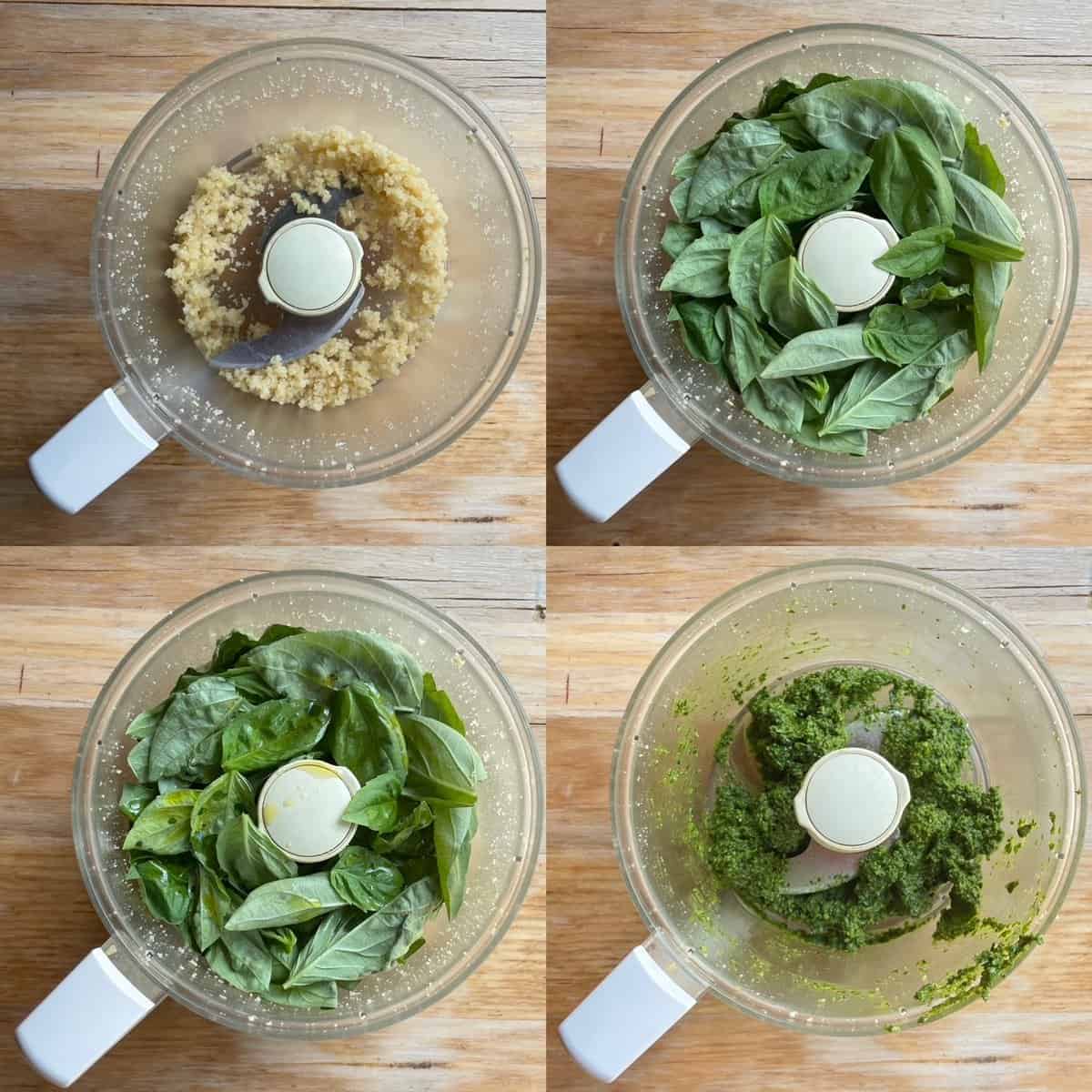
How to use pistachio basil pesto
The most common way to serve pesto is definitely over pasta. The traditional pasta shape served with pesto is trenette, a long ribbon-like pasta similar to linguine. Personally I think this pistachio basil pesto works perfectly with every pasta.
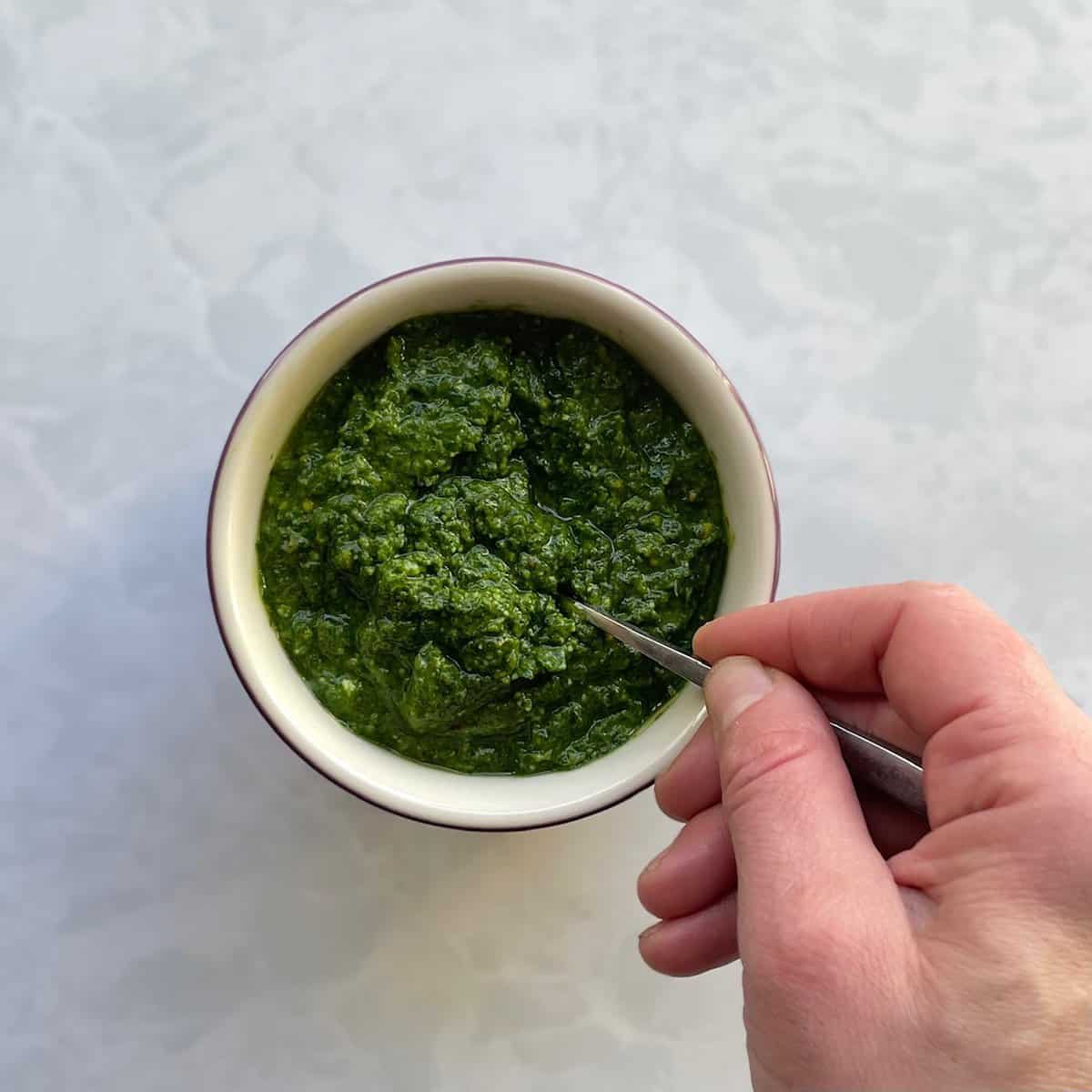
Here are a few other suggestions for what to eat with pesto:
- use in a pasta salad like this orzo pesto salad.
- make some homemade pizza dough and use this basil pistacho pasta as a base.
- make a creamy pesto dressing for salads.
- roll it in a babka or bread dough.
- start chicken breasts in a cast iron skillet. When you flip them over, top with pesto and shredded mozzarella cheese!
- spread on your favorite sandwich bread.
- stir into eggs, a frittata or quiche.
- add to soups like this easy 4 ingredient potato soup.
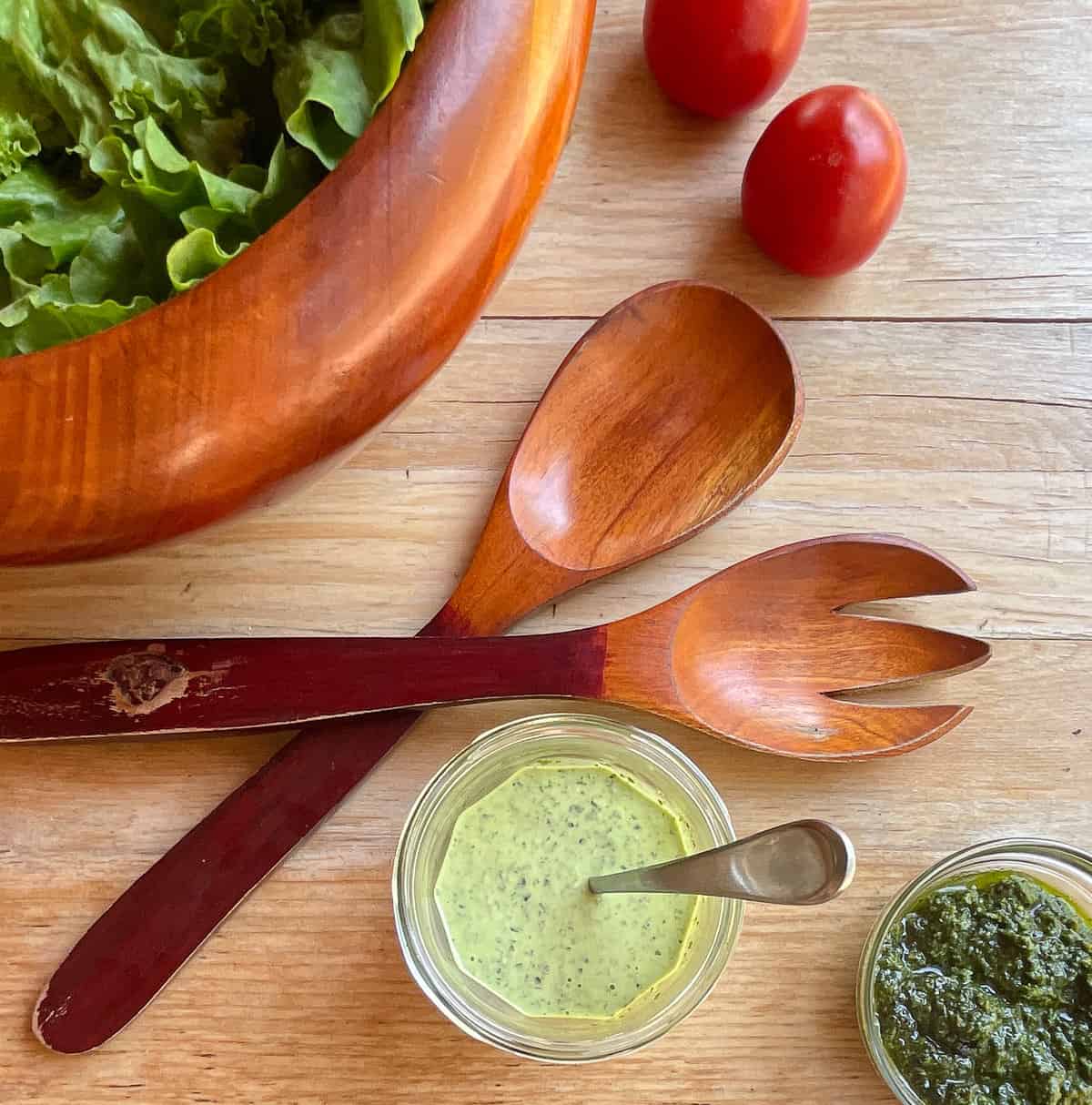
Recipe FAQs
Use 1 to 2 tablespoons of basil pesto per serving. Unless you’re mr. uglyducklingbakery, and then a serving is a half-cup.
Although not as quickly as this simple guacamole recipe, all basil pesto recipes will also oxidize and start to brown. If you are not using the pesto immediately, cover it with plastic wrap pressed down onto the pesto. Topping with a thin layer of olive oil can also slow the oxidation process. If you really care about the color of your pesto, blanch your basil leaves and then dry them completely before adding them to the food processor.
If you make more pesto than you’ll eat immediately, freeze it in tupperware-type containers. Or you can freeze smaller amounts in ice cube trays to add to eggs or other dishes.
Related pasta recipes
Check out other recipes for healthy pasta, cheesy pasta recipes, and homemade pasta sauces from the Ugly Duckling Bakery archives like:
Love this recipe? Please leave a 5-heart 💜💜💜💜💜 rating in the recipe card below. Let me know how much you loved it, or any problems you had, in the comments section further down.
Recipe
Basil Pistachio Pesto
Equipment
- Food processor
Ingredients
Basil pesto
- 2 tablespoons pistachios, lightly toasted
- 1 clove garlic
- 1 ounce Parmesan equivalent to about ¼ cup grated cheese
- 3 ounces (1 small box) fresh basil leaves picked from stems and flowers
- 2 tablespoons olive oil plus more as needed
- ½ teaspoon salt
Instructions
- Add the toasted pistachios, garlic, and Parmesan to the food processor and blitz until fine.2 tablespoons pistachios, lightly toasted, 1 clove garlic, 1 ounce Parmesan
- Add the basil, olive oil, and salt and process, scraping down as needed until all of the leaves have been chopped into a puree. You may need to add more olive oil to get it to your desired consistency.3 ounces (1 small box) fresh basil, 2 tablespoons olive oil, ½ teaspoon salt
Notes
The traditional pasta shape served with pesto is trenette, a long ribbon-like pasta similar to linguine. However, I think this basil pistachio pesto is perfect with any pasta shape!
Nutrition
Are you an adventurous home cook looking for inspiration in your weeknight meals and weekend baking? Get inspiration here:

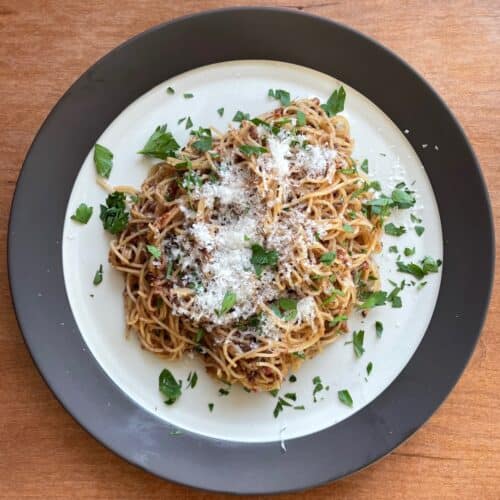
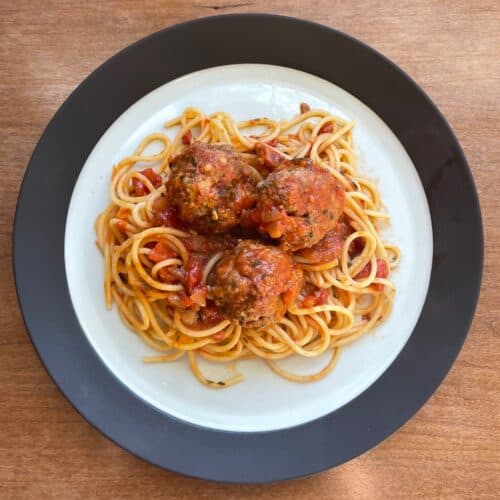
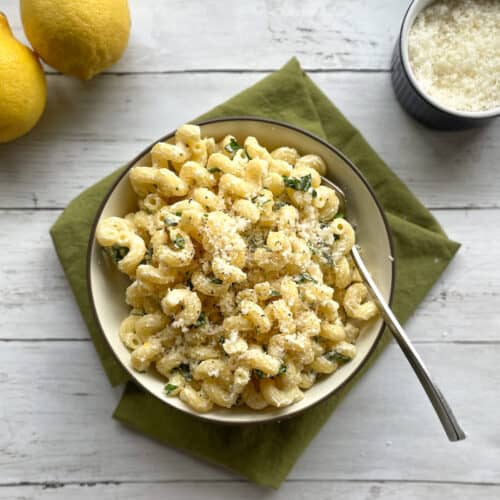
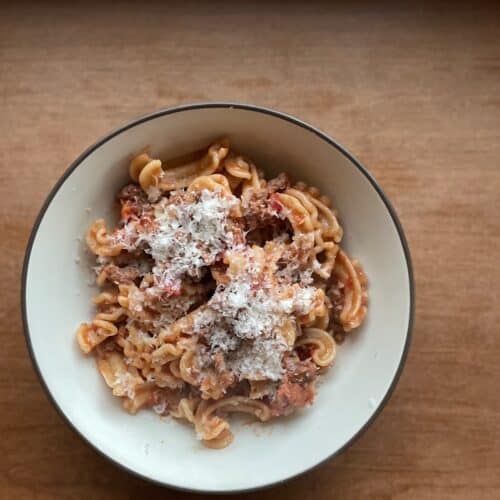
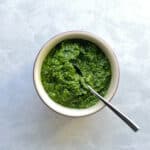
Comments
No Comments